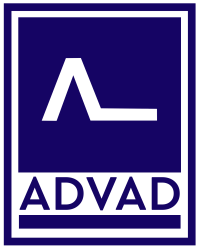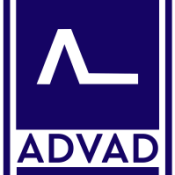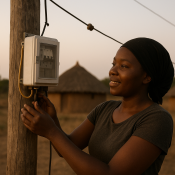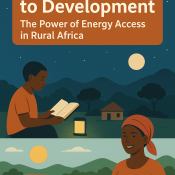
Innovative Financing Models for Rural Electrification Projects
Rural electrification is more than a development goal, it’s a catalyst for education, healthcare, and economic growth. Yet, one of the biggest barriers to bringing electricity to underserved communities is financing. Building infrastructure in remote areas often requires significant investment, and traditional funding methods are not always accessible or sustainable.
Fortunately, new and innovative financing models are changing the game, making rural electrification more achievable than ever before.
1. Grants and International Development Funds
Global organizations, such as the World Bank, African Development Bank, and UN agencies, offer grants and low-interest loans for rural electrification projects. These funds often target renewable solutions like solar mini-grids and off-grid systems, ensuring long-term sustainability.
Example: The Nigeria Electrification Project (NEP) has leveraged World Bank funding to connect thousands of households and businesses to clean, reliable power.
2. Pay-As-You-Go (PAYGo) Solar Models
In the PAYGo model, households pay small, manageable installments for solar power instead of a large upfront cost. Once the system is fully paid off, the customer owns it outright. This approach has been widely successful in East Africa and is now growing in Nigeria.
Why it works: It aligns with household cash flow in low-income communities while building a culture of payment responsibility.
3. Public-Private Partnerships (PPPs)
Government bodies and private companies can pool resources and expertise to fund, build, and maintain rural electrification projects. The public sector often provides regulatory support and subsidies, while the private sector brings innovation and efficiency.
Example: In Lagos and other Nigerian states, PPP models have been used to install solar streetlights and hybrid power systems in peri-urban and rural zones.
4. Community-Based Financing
Local cooperatives and community savings groups can collectively invest in shared renewable systems, such as a village mini-grid. Members contribute regularly, ensuring both ownership and accountability.
Why it works: Communities are more likely to maintain and protect infrastructure they helped fund.
5. Green Bonds and Impact Investing
Financial instruments like green bonds raise capital specifically for environmentally friendly projects, including rural electrification. Meanwhile, impact investors look for ventures that deliver both financial returns and measurable social benefits
Trend to watch: Nigerian banks and fintech companies are beginning to explore renewable energy focused investment products.
The Bigger Picture
Financing isn’t just about getting the project started, it’s about ensuring sustainability. The most effective rural electrification models often combine multiple funding streams to spread risk, reduce costs, and ensure long-term success.
By adopting innovative financing strategies, Nigeria can accelerate electrification, close its energy gap, and drive inclusive economic growth.

Partner with Advad to Power Nigeria’s Future
At Advad, we understand that financing can be just as critical as technology in making rural electrification a reality. As a fully indigenous and rapidly growing organization, we are positioned to provide tailored energy solutions—whether through solar mini-grids, hybrid power systems, or grid-extension support—across diverse sectors of the Nigerian economy.
If you’re ready to bring light, opportunity, and growth to your community or project, Advad is your trusted partner.
📩 Contact us today to explore how we can help make your electrification vision financially and technically possible.




